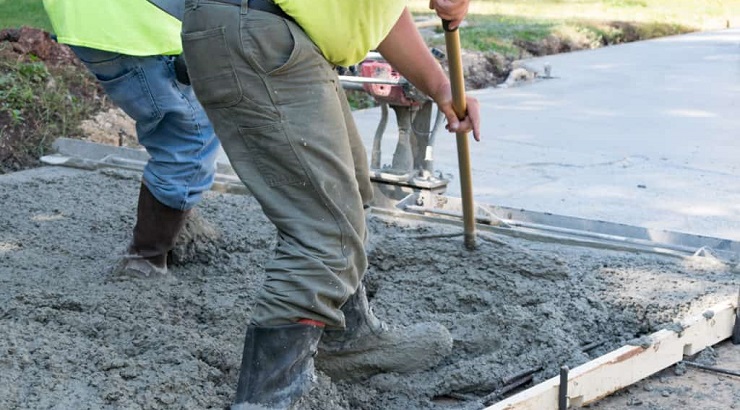Features
Concrete Flooring Pros, Cons and Design Ideas
The major pros and cons of a concrete floor.

Concrete flooring is a preferred choice for many homeowners thanks to its ability to marry functionality and attractiveness with durability and ease of maintenance.
Indeed, concrete can be stained virtually any colour, resurfaced in plentiful textures or polished to give the concrete floor a smooth, shiny appearance.
Here are some of the major pros and cons of concrete flooring to help you decide whether or not a concrete floor is a good choice for you.
Concrete flooring benefits
A concrete floor offers the following advantages:
- Affordability. It can be planned for any budget.
- Durable. It can last for 50 years or more.
- It requires little maintenance.
- It is free of toxic volatile organic compounds.
- Moisture and stains resistance when properly sealed.
- It allows installation of a radiant heating system.
- It allows unlimited design options.
Concrete flooring drawbacks
- It can become slippery when wet.
- It requires some occasional resealing.
- It may require placing of carpets for warmth.
- It can develop cracks after some years.
- Patching can be quite problematic.
Concrete interior floors
When it comes to concrete flooring interior spaces, no other room is more appropriate for consideration than the kitchen.
This is because, concrete can endure the high foot traffic and elements that kitchen floors are exposed to, while allowing for limitless design options.
A concrete floor is also easy to clean up since it does not come with grout lines that can trap spills and dirt – creating an ugly scene in the kitchen.
Concrete interior floors are also suitable for bathroom and basement, both of which require a material that can resist moisture and spills.
Concrete flooring’s ability to withstand high foot traffic makes it ideal for interior floors of busy areas such as retail stores, offices, churches, schools, medical institutions, restaurants, night clubs, etc.
Concrete flooring design ideas
- Stained concrete floor
Concrete can be stained to achieve the look of stone, marble, granite, wood, etc. This can be achieved through the use of acid-based stains that are widely available in earthy-toned palettes and water-based formulations.
- Choice of colours
While natural grey tends to be the most popular choice for building developers, concrete flooring offers unlimited possibilities as far as colors are concerned.
This enables blending of the floor colour with other elements of the room.
Colors can either be mixed into the concrete or applied to the floor with dyes, stains, tinted sealers, epoxy coatings or a combination of two or more methods.
- Stamps and texture skins
In addition to staining, stamps and texture skins can be used to create finishes that resemble brick, stone, tiles, wood, and other flooring materials.
RELATED: Stamped concrete designs
Companies, churches, and educational institutions can do some stenciling or engraving to incorporate logos on their floors for branding purposes.
- Polished concrete floor
Natural grey concrete, or any other colored concrete for that matter, can be polished for a glossy finish that oozes sophistication.
Concrete flooring costs
The cost of installing a concrete floor can be extremely affordable when there is a ready concrete slab that only requires some staining or polishing.
The cost per square foot for a basic concrete floor is comparable to that of carpet, vinyl, low-cost ceramic tile or linoleum.
Medium-end concrete interior floors cost nearly the same as classy tiles, laminate, and hardwood, while the high-end ones are comparable to marble, slate, or stone.












